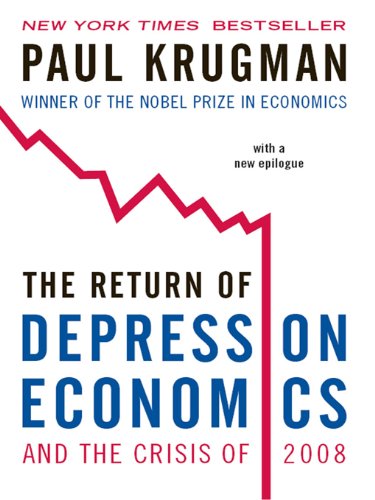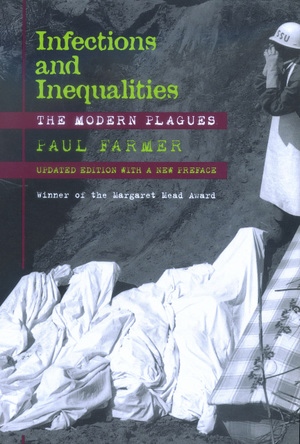The Great Derangement: Climate Change and the Unthinkable. Amitav Ghosh. Penguin Random House India. 275pp. ₹399. 2016. ISBN 9780670089130
When the Swedish astronomer Pehr Wilhelm Wargentin put a thermometer outside his window in January 1756 to begin measuring average monthly temperatures, he began one of the world’s longest observation series. That January, Wargentin noted a “rather changeable winter this month”. Approximately 260 years later, Sweden could be said to be experiencing a rather changeable summer, with temperatures in July being 10°C above normal. A town in Norway, located at 70°N, beyond the Arctic Circle, recorded 32°C. Utsjoki, again, north of the Arctic Circle, recorded 33.3°C. Further south, in Greece, wildfires claimed the lives of 96 people. Gianis Labropoulos, a person who found himself engulfed by fire, spoke of suddenly “feel[ing] the heat and see[ing] the fire”, while “branches and debris [were] hitting the car”. Likewise, as the BBC reports, Argyro Moustaka Brettou’s mother and aunt were “screaming that they were going to be burned alive”. He was anxious and scared while rushing back to the house to help, shouting that his mother is being burned alive, as his car came to a standstill in jam-packed streets, unable to move forward. Meanwhile, his phone battery died. Waiting was a “living hell”. In Japan, 65 people were killed in a single week, while 22,647 had to be taken to the hospital, as the heatwave spread. Shizuko (93) and Miyoko Ogata (84) passed away in their home. Unnoticed. In Quebec, 54 died. On July 5, Algerian city of Ourgla simmered at 51.3°C.
Homes were destroyed, the earth was in flames, streets were flooded, volcanoes erupted, forests were destroyed, animals collapsed. New details of the same old story. The ostentatious extremes of these events conceal their continuity, as the slow violence of climate change unravels year after year. The silence of the crowd is deafening. We are at an impasse.
Amitav Ghosh’s book indicts as it attempts to articulate this impasse. In three parts of the book, which originated as lectures given in 2015 at the University of Chicago, Ghosh reflects on the literature, history, and politics in the time of carbon-accumulation and climate change.
In Part I, “Stories”, Ghosh analyzes the ‘literary novel’ as a limiting form incapable of taking into account the era of climate change due to its very style of narration. Novels proceed, according to Ghosh, by concealing “the exceptional moments that serve as the motor of narrative” (p.22) through fillers. Fillers act to normalize the narrative and insert regularity of everyday life into the foreground. Therefore, while modern life is rationalized into existence, the climate is forced into the background with its assumed stability. By giving way to gradual change and regularity, the literary novel fails to account for Nature’s catastrophism, that is, sudden turn of events of ‘unrepeatable uniqueness’. Through gradualism and fillers, the modern novel reproduces the bourgeois life in isolation, assuming a consistent flow of natural resources that fuel it. One simply needs to remember the natural origin of ‘fillers’, be they iPhones or other more mundane necessities of the everyday bourgeois life, such as the car.
Ghosh criticizes the modern ‘literary novel’ for being focused on the ‘individual moral adventure’ over ‘men in aggregate’ (p.104). By isolating the individual it leads to her separation not only from the aggregate but also from Nature, thereby creating an ever deeper gulf between Nature and Culture, with the former belonging to the sciences and the latter to the human. How can then, Ghosh asks, the aggregate cause of global warming be addressed by reference to aggregate action necessary to stop and reverse its flow? Likewise, this suppression of hybrids (p.95) makes the telling of the story of climate change difficult for the literary novel. Words such as oil, naphtha, bitumen, and to an extent coal, cannot fit within the narrative conventions of the novel. They do not ‘taste’ nice if you will. What Ghosh hopes for then, is the emergence of new hybrid forms that will alter the act of reading the novel (p.113).
However, what Ghosh effectively calls for is the attribution of a species category to the Anthropocene narrative in the pursuit of the climate-conscious novel. Namely, the realization that the ‘aggregate of man’ is responsible for the ‘The Great Acceleration’ through its aggregate action, and by extension, the aggregate of man will remedy the consequences of aggregate action. The focus on the ‘aggregate’ would fail to account for the intra-species inequalities. It is universally acknowledged that a minority of the world population is using a disproportionately large percentage of world resources, thereby preventing the majority from having their fair access share, leading to overexploitation. This falls within the realm of climate justice, which Ghosh touches upon, for example, in his description of the consequences of the variations in the rivers’ flow due to the accelerated melting of the Himalayan glaciers. However, climate justice refers merely to the distributive effect of the consequences of global warming, not their causes. Thus a hybrid novel would not only have to bridge the culture-nature divide but also account for the inequalities within the social realm that are reproduced in the bourgeois life and act as the motor for climate change.
Ghosh comes close but nonetheless falls short of articulating this in Part II, on History. In Part II, Ghosh views capitalism and empire as “dual aspects of a single reality”, pushing in “different directions, sometimes producing counter-intuitive results” (p.117). In other words, “the emerging fossil-fuel economies of the West required that people elsewhere be prevented from developing coal-based energy systems of their own” (p.144). It was, paradoxically, this forcible prevention by the means of imperial domination that, in fact, delayed the onset of the climate crisis (p.148). Ghosh reasons that had India or China been allowed to develop their fossil-fuel based energy systems alongside England, the 350 parts per million would have been reached much sooner. Citing Gandhi, Ghosh strengthens his position that “if an entire nation of 300 million [sic] took to similar economic exploitation, it would strip the world bare like locusts” (p.150). Again, Ghosh falls pray to blaming the species for the actions that were undertaken by the few in a position of power relative to their own societies, as well as internationally. Even during ‘The Great Acceleration’, the majority of the world population did not partake in the fossil fuel economy. In Ghosh’s India herself, people largely relied on cow-dung, charcoal, and firewood for domestic purposes. Individuals imprints on the climate, therefore, vary by birth.
In India, coal was first extracted by the British. In the 1810s, William Jones opened the Raniganj mine, which was to feed the newly introduced steam-powered ships in India, thereby disassociating them from the limits imposed by nature. Ships would not be dependent on winds any longer. Moreover, the 1830s saw the creation of the first Coal Committee, which set out to survey the jungles for coal reserves. In fact, those who lived on coal reserves were forced to ‘go into the pits’ by the wealthy landowners who purchased the zamindari rights and thereby forced the peasants down into the pits at the pain of expulsion. These exploitations were on a much larger scale than previously used domestically. These large-scale excavations allowed the British to, literally, fuel their economy, which was then imposed on the world. It was not so much that the British ‘prevented’ India from fossilizing its economy, as they imposed their requirements on them. Capitalism and empire pushed in the same direction. Ghosh comes close but again falls short of this conclusion in his description of the British actions in Burma, regarding the oil fields of Yenangyaung (p.135). “The earth-oil of Yenangyaung had many uses: it was applied on the skin as a remedy for certain conditions, and was also used as an insecticide, as a lubricant for cartwheels…”(p.135). Ghosh assumes that there “is no reason to suppose that Burma would have been unable to navigate the emerging petroleum economy had it been free to do so” (p.138), despite previously stating the different uses of oil in Burma, and the forcible British invasion and annexation of Konbaung realms, which led to the creation of Burmah-Shell. The seemingly large leap from applying oil on the skin to extracting millions of barrels of oil from the Earth is accounted for solely by investigating the requirements of the British economy and its imperial ambition that acted in its interest. One cannot assume that had Burma remained independent, that it would have developed its oil industry. To do so is to engage in counter-factual thinking.
In Part III, on Politics, Ghosh condemns the public politics of climate change. The framing of climate change as a ‘moral issue’ fails to account for the problem of the global commons and the requirement for collective action. In the political sphere, Ghosh singles out the encyclical letter of Pope Francis ‘Laudato Si’ and the Paris Agreement. Criticizing the text of the Agreement, Ghosh finds it an instrument of concealment and withdrawal (p.208). ‘Laudato Si’, on the other hand, juxtaposes the ecological with the social, insisting that “a true ecological approach always becomes a social approach” (p.211). Ghosh uses ‘Laudato Si’ as an example of the growing involvement of religious groups in the politics of climate change. Given the inability of the formal political structures to tackle the problem, Ghosh conjures up the ‘sacred’ of the religious. The ‘sacred’ allows for the overcoming of the barriers of the nation-state, which is what holds the politics of climate change hostage to geopolitical rivalries and ultimately in a standstill.
However, in his approach to religious movements, Ghosh falls pray to a certain degree of ‘traditionalism’. Religious critique of socio-economic development is accompanied by a particular view on the society and which form it ought to take, as well as the type of relationship between itself and Nature. Most prominent in this outlook is the Hindu tradition, which views colonialism as (rightly) having usurped the local and indigenous knowledge of, for example, forest management and replaced it with commercial, for-profit exploitative and unsustainable framework. Moreover, village communities, which Ghosh indirectly pays tribute to by invoking Gandhi’s disgust of industrialism, are seen as possessing ecological ethic. In essence, Bharat, as opposed to India. This inherent ecological approach of the tradition encompasses the caste-system and its stratified social organization, which discriminates against and legitimizes the oppression of Dalits by allegedly providing them with a functional role in the ‘trophic levels of caste’. Religiously grounded movement can bring the ecological in opposition to the social, which is what Ghosh lauds the encyclical for. Allegedly ecological basis of the social organization then becomes a mechanism of oppression. Likewise, religion may view catastrophe as the inevitable product of humanity’s straying away from a certain ‘path’. One simply needs to recall the outpouring of homophobic, xenophobic, sexist and other denigrating remarks following natural catastrophes that struck the United States. Does religion then really offer an integrated socio-economic, and at the same time, the ecological solution to the ongoing climate crisis? No, for religion can itself be an expression of social alienation.
The book suffers a formatting shortcoming. Replete with dates, events, names it may be, it does not offer the reader an index. Although the quoted lines, which are replicated at the end of the book, coupled with reference material allow one to check the origins of Ghosh’s statements.
Nevertheless, Ghosh book is a testament to the frustration and limitations of contemporary thought on the relationship between human actions and climate change, and our inability to conceptualize and act upon the alternative. It is precisely this that leads us to continue living (in) ‘the Great Derangement’. One may, therefore, expect the events of the summer of 2018 to be repeated in the summer of 2019, 2020… until they stop. Either because there will be no one left to scream and shout, or because we will have found a way to prevent it from happening. It seems though, that we will not be able to read about it, just yet.




